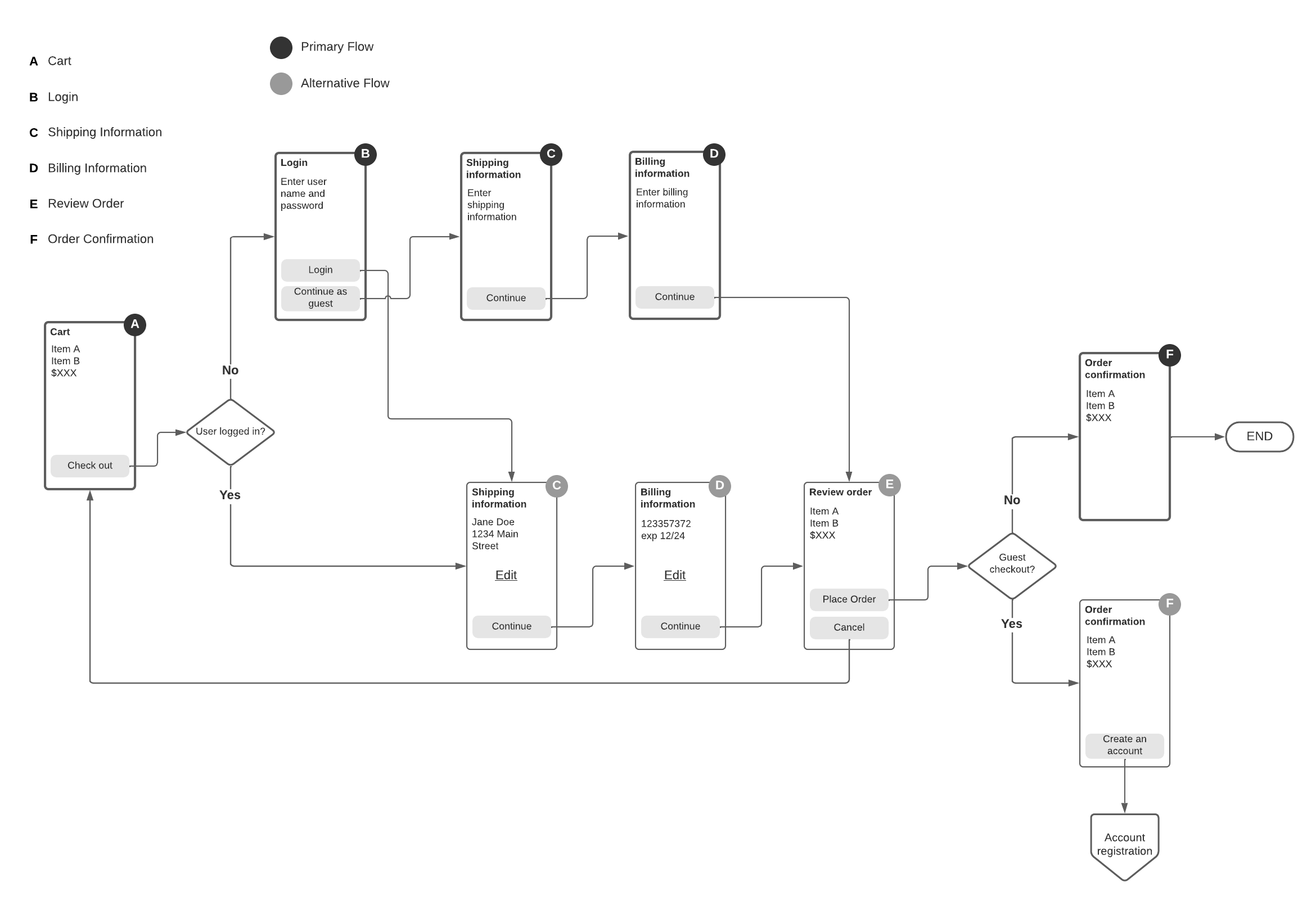Flow diagramming
Flow diagrams are a complimentary artifact to an object model. They illustrate how tasks will be accomplished in a system, including both main and alternative flows.
I’ve found that some designers aren’t familiar with the standard symbols for creating flow diagrams. Adhering to standard conventions simplifies creating the diagram and makes it easier for others to understand it.
The four must-know symbols of flow diagramming are:
The rectangle (a process)
The diamond (a decision)
The rounded rectangle (the terminator showing where the process ends)
The off-page reference (which allows you to link to another, related task flow diagram)
For UX flow diagramming, I add a fifth main symbol — an oval, which indicates actions that initiate or commit a function. This symbol is handy to highlight the major actions a user takes as part of the flow.
Some example flow diagrams from my upcoming book on object modeling and flow diagramming are below.
E-commerce check-out | task flow diagram
This diagram illustrates the main and alternative flows for e-commerce checkout. The use case outline at the top of the diagram helps summarize the flow.
Re-routing power | task flow diagram
This diagram uses swim lanes to show how tasks flow between different roles.
E-commerce | screen flow diagram
The screen flow diagram below uses screen schematics to show the e-commerce flow as users would experience it.



